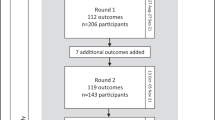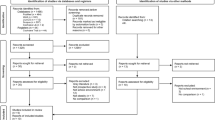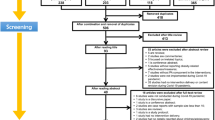Abstract
Background and objectives:
The European Union—as well as other parts of the world—faces a major challenge of increasing incidence of overweight/obesity. In particular, the increase in childhood obesity gives rise to a strong imperative for immediate action. Yet, little is known about the effectiveness of community interventions, and further research in this field is needed. There is, however, a growing consensus that such research should start from the paradigm that the current living environments tend to counteract healthy lifestyles. Questioning these environments thoroughly can help to develop new pathways for sustainable health-promoting communities. Against this background, the IDEFICS (Identification and prevention of dietary- and lifestyle-induced health effects in children and infants) study developed and implemented innovative community-oriented intervention programmes for obesity prevention and healthy lifestyle primarily in children aged 2–10 years in eight European countries: Sweden, Estonia, Germany, Belgium, Hungary, Italy, Spain and Cyprus.
Materials and methods:
The IDEFICS community-oriented intervention study mobilised an integrated set of interventional efforts at different levels of society, with the aim of facilitating the adoption of a healthy obesity-preventing lifestyle. The overall programme has been composed of 10 modules: three at community level, six at school level and one for parents. The main focus was on diet, physical activity and stress-coping capacity. The sphere of action encompassed both children and their (grand) parents, schools, local public authorities and influential stakeholders in the community. All materials for the interventions were centrally developed and culturally adapted.
Results:
So far, the following has been achieved: focus group research, literature review and expert consultations were done in an early phase as a basis for the development of the intervention modules. The intervention mapping protocol was followed as guide for structuring the intervention research. The overall intervention programme's duration was 2 years, but a longer-term follow-up programme is under development.
Conclusions:
This large-scale European effort is expected to contribute significantly to the understanding of this major public health challenge.
This is a preview of subscription content, access via your institution
Access options
Subscribe to this journal
Receive 12 print issues and online access
$259.00 per year
only $21.58 per issue
Buy this article
- Purchase on Springer Link
- Instant access to full article PDF
Prices may be subject to local taxes which are calculated during checkout


Similar content being viewed by others
References
Lobstein T, Baur L, Uauy R, For the IASO International Obesity Task Force. Obesity in children and young people: a crisis in public health. Obes Rev 2004; 5 (Suppl 1): 4–85.
Wang Y, Lobstein T . Worldwide trends in childhood overweight and obesity. Int J Pediatr Obes 2006; 1: 11–25.
Anderson PM, Butcher KE . Childhood obesity: trends and potential causes. Future Child 2006; 16: 19–45.
Philippas NG, Lo CW . Childhood obesity: etiology, prevention, and treatment. Nutr Clin Care 2005; 8: 77–88.
Swinburn B, Egger G, Raza F . Dissecting obesogenic environments: the development and application of a framework for identifying and prioritizing environmental interventions for obesity. Prev Med 1999; 29: 563–570.
Astrup A, Bovy M, Nackenhorst K, Popova A . Food for thought or thought for food?—A stakeholder dialogue around the role of the snacking industry in addressing the obesity epidemic. Obes Rev 2006; 7: 303–312.
Pigeot I, Barba G, Chadjigeorgiou C, De Henauw S, Kourides Y, Lissner L et al. Prevalence and determinants of childhood overweight and obesity in European countries: pooled analysis of the existing surveys within the IDEFICS Consortium. Int J Obes (Lond) 2009; 33: 1103–1110.
Ahrens W, Bammann K, De Henauw S, Halford J, Palou A, Pigeot I et al. Understanding and preventing childhood obesity and related disorders--IDEFICS: a European multilevel epidemiological approach. Nutr Metab Cardiovasc Dis 2006; 16: 302–308.
Bammann K, Peplies J, Sjöström M, Lissner L, De Henauw S, Galli C et al. Assessment of diet, physical activity biological, social and environmental factors in a multi-centre European project on diet- and lifestyle-related disorders in children (IDEFICS). J Publ Health 2006; 14: 279–289.
Ahrens W, Bammann K, Siani A, Buchecker K, De Henauw S, Iacoviello L et al. The IDEFICS cohort: design, characteristics and participation in the baseline survey. Int J Obes 2011; 35 (Suppl 1): S3–S15.
Kumanyika S, Jeffery RW, Morabia A, Ritenbaugh C, Antipatis VJ . Obesity prevention: the case for action. Int J Obes 2002; 26: 425–436.
Huang TT, Drewnosksi A, Kumanyika S, Glass TA . A systems-oriented multilevel framework for addressing obesity in the 21st century. Prev Chronic Dis 2009; 6: A82.
Huang TT, Glass TA . Transforming research strategies for understanding and preventing obesity. JAMA 2008; 300: 1811–1813.
Kumanyika SK . Minisymposium on obesity: overview and some strategic considerations. Annu Rev Public Health 2001; 22: 293–308.
Sallis JF, Owen N, Fisher EB . Ecological models of health behavior. In: Glanz K, Rimer BK, Viswanath K (eds). Health Behavior and Health Education: Theory, Research, and Practice, 4th edn. Jossey-Bass: San Francisco, 2008, pp 465–486.
Crawford D, Jeffery RW . Obesity Prevention and Public Health. Oxford University Press: Oxford, 2005.
Bartholomew LK, Parcel GS, Kok G, Gottlieb NH . Planning Health Promotion Programs: An Intervention Mapping Approach. Jossey-Bass: San Fransisco, 2006.
Shrewsbury V, Wardle J . Socioeconomic status and adiposity in childhood: a systematic review of cross-sectional studies 1990–2005. Obesity (Silver Spring) 2008; 16: 275–284.
Swinburn B, Egger G, Raza F . Dissecting obesogenic environments: the development and application of a framework for identifying and prioritizing environmental interventions for obesity. Prev Med 1999; 29: 563–570.
Haerens L, De Bourdeaudhuij I, Barba G, Eiben G, Fernandez J, Hebestreit A et al. Developing the IDEFICS community-based intervention program to enhance eating behaviors in 2- to 8-year-old children: findings from focus groups with children and parents. Health Educ Res 2009; 24: 381–393.
Acknowledgements
This work was done as part of the IDEFICS study (http://www.idefics.eu). We gratefully acknowledge the financial support of the European Community within the Sixth RTD Framework Programme Contract No. 016181 (FOOD) and the grant support from EU for IDEFICS study. We thank the children for their participation in the IDEFICS study.
Author information
Authors and Affiliations
Consortia
Corresponding author
Ethics declarations
Competing interests
The authors declare no conflicts of interest.
Additional information
Statement of ethics
We certify that all applicable institutional and governmental regulations regarding the ethical use of human volunteers were followed during this research. Approval by the appropriate ethical committees was obtained by each of the eight centres engaged in the fieldwork. Participants were not subjected to any study procedure before both the children and their parents gave their consent for examinations, collection of samples, subsequent analysis and storage of personal data and collected samples. The participating children and their parents could consent to single components of the study while refraining from others.
The information in this document reflects the authors view and is provided as is.
Rights and permissions
About this article
Cite this article
De Henauw, S., Verbestel, V., Mårild, S. et al. The IDEFICS community-oriented intervention programme: a new model for childhood obesity prevention in Europe?. Int J Obes 35 (Suppl 1), S16–S23 (2011). https://doi.org/10.1038/ijo.2011.31
Published:
Issue Date:
DOI: https://doi.org/10.1038/ijo.2011.31
Keywords
This article is cited by
-
Prospective associations between social vulnerabilities and children’s weight status. Results from the IDEFICS study
International Journal of Obesity (2018)
-
Bidirectional associations between psychosocial well-being and adherence to healthy dietary guidelines in European children: prospective findings from the IDEFICS study
BMC Public Health (2017)
-
Views of policy makers and health promotion professionals on factors facilitating implementation and maintenance of interventions and policies promoting physical activity and healthy eating: results of the DEDIPAC project
BMC Public Health (2017)
-
Association of desaturase activity and C-reactive protein in European children
Pediatric Research (2017)
-
The impact of familial, behavioural and psychosocial factors on the SES gradient for childhood overweight in Europe. A longitudinal study
International Journal of Obesity (2017)



